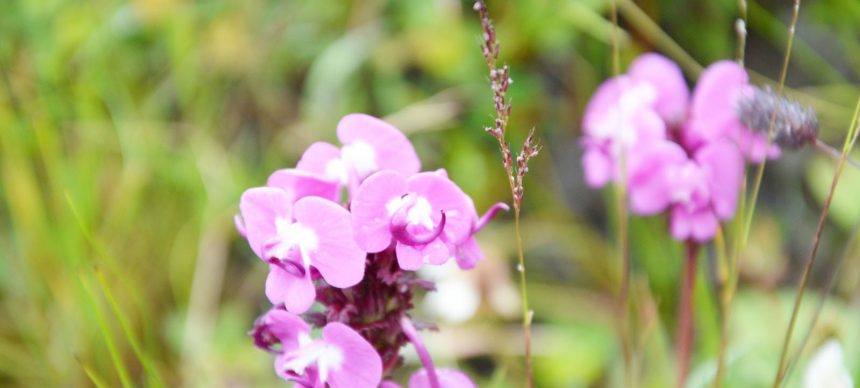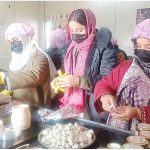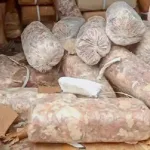Kargil : The mountainous district of Kargil in the Ladakh Union Territory is home to a diverse range of plant species, including many with valuable medicinal properties. Local experts estimate that around 400 medicinal plant species grow in the region, playing a crucial role in the daily lives of the local population.
Despite access to modern allopathic medicine, the people of Kargil continue to rely on herbal decoctions and extracts derived from medicinal plants. The traditional healing system, known as Sowa Rigpa, is practiced by Amchis—healers who inherit the knowledge from their forefathers and pass it on to the next generation.
Tashi, an Amchi in Leh district with a postgraduate degree in medicinal plants, is well known in the region. Every day, around 30 to 40 patients seek treatment from her, receiving herbal decoctions and extracts for various ailments. Recognizing the significance of medicinal plants, the government has initiated awareness programs and exhibitions to educate people about their benefits.
Several medicinal plants found in Kargil are highly valued for their healing properties. Artemisia dracunculus (Tarragon), found in Suru Valley, possesses antibacterial and antifungal properties and is also used as an aromatic culinary herb.
Mentha longifolia (Horse Mint), also growing in Suru Valley, exhibits antibiotic activity against bacteria, yeasts, and insects. Its essential oil is known for its antimicrobial, antinociceptive, and carminative effects.
Lancea tibetica (Depgul), found in Nubra Valley, is used to treat pulmonary and heart disorders and aids in wound healing.
Hippophae (Seabuckthorn), which grows across Kargil, is considered a powerhouse of nutrients. Its fruits, leaves, and seeds have anti-aging, anti-cold, memory-enhancing, and energy-boosting properties and are rich in vitamins C, A, B, E, and K.
Sinopodophyllum hexandrum (Himalayan Mayapple), found in Leh and Kargil, is traditionally used for treating gynaecological disorders, including irregular menstrual cycles.
Aconitum heterophyllum (Atis), a herbaceous perennial plant found in Leh and Kargil, is used for arthritis, gout, swelling, pain, inflammation, intestinal worms, cardiac issues, body heat regulation, leprosy, and paralysis.
Many locals, including Mohammad Hassan, believe it is essential to preserve Kargil’s medicinal plant heritage, as these plants are not only used in traditional medicine but also hold immense potential for modern pharmaceuticals.
“I have collected many medicinal plant species from the mountains and introduced them at my home. I continue to use their extracts for their health benefits, as they have no side effects,” Hassan said.
He believes that cultivating medicinal plants could generate significant economic benefits and encourage agri-entrepreneurship in the region.
However, locals have expressed concerns about over-exploitation, unplanned extraction, and a lack of conservation efforts. They pointed out that the Juniper tree, once abundant in Kargil, is now under threat.
“This tree takes years to grow, but its population has dwindled in recent years due to excessive exploitation,” residents said.
Dr. Shabir Hussain, an ethnobotanist at the University of Ladakh, explained that in the past, people believed that cutting sacred trees would result in diseases. “This belief helped some juniper trees to survive,” he said.
He urged the government to launch a conservation program to preserve Juniper and other medicinal plants in the region.
In a research article published in Journal of Medicinal Plant Studies, Abdul Hadi and Seema Singh from Department of Botany, University Of Kashmir, have called for conservation of threatened medicinal plants in Kargil.
Their five-year field survey conducted across the Kargil district, from Zojila Pass to Zanskar, has revealed threats to 22 medicinal plant species.
The study, spanning from May 2015 to September 2020, found that illegal trade, climate change, and human interference are driving these species toward extinction.
The research identified 21 Angiosperms and one Gymnosperm used by local tribal communities for treating ailments, particularly digestive and respiratory disorders.
According to findings Ranunculaceae and Asteraceae families were the most affected, with herbs making up 91% of the threatened species.
The research article observes that smugglers are reportedly exploiting schoolchildren and unemployed youth to collect valuable plant parts such as roots, leaves, and whole plants, which are sold in the black market.
“Pre-harvesting pressure and the introduction of exotic fodder plants are accelerating the decline of native flora,” the findings reveal.
Experts call for urgent conservation strategies, including sustainable harvesting, awareness programs, and community-led preservation initiatives.
With Kargil’s unique biodiversity at risk, researchers urge government and non-governmental organizations to take immediate action to protect these invaluable plant species before they disappear forever.
Writer is intern with Rising Kashmir








